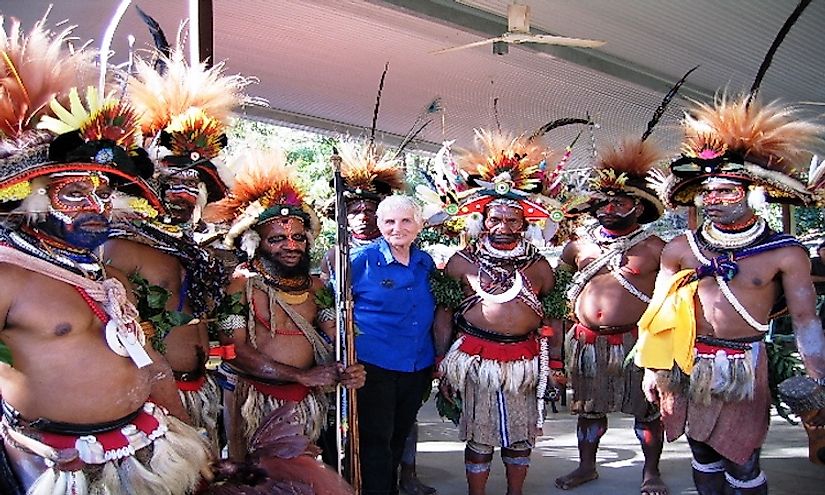The Huli People Of Papua New Guinea And Their Dramatic Headgears

The Huli is an indigenous group of people living in Papua New Guinea who are famous for their custom of wearing decorations on their heads as well as painting their faces. The Huli people make up the largest indigenous group in Papua New Guinea with a population estimated at 90,000. The tribe inhabits the central mountains of the country and their social structure centers around clans and subclans.
Origin Of The Huli People
It is estimated that the tribe has lived in the region it inhabits for 1,000 years. The people trace their ancestry to a male ancestor named Huli, who according to legend was the first man to engage in agricultural activities in Huli territory. The Huli people were involved in extensive traveling, primarily for trade. The tribe’s existence was not known until 1934 when about fifty of them were killed by two European adventurers. Plane travel allowed Europeans to bypass the rugged terrains in the mountains and they were thereby exposed to Huli culture and life.
Wardrobe Of A Huli Man And Woman
A Huli man in casual wear appears scantily dressed in comparison to other societies. He wears a string apron tied at his waist which flows to his knees. A bunch of cordyline leaves cover his buttocks and appear shiny in their green and blue hue.The men compliment their outfit with a selection of beads, earrings, shell breastplate, a black palm belt, and a bone knife. A Huli woman wears a long skirt made of grass and a smock to cover her breasts. Women wear fewer ornaments than men usually flowers in their hair, neck beads, and a kina shell breast. Both genders sport a spring bag which is used to carry items such as sweet potatoes for women and tobacco, money, and a bamboo smoking pipe for men. The Huli are body decorators, and they are often seen adorned in the facial paint. Traditionally, yellow clay was used, but manufactured paint is being used in the modern day.
The Dramatic Headgears Of Hulis
The Huli attire is completed by a dramatic wig usually worn by men. The headgears are made from their individual hair, and the process takes several months. The process is carried out by wigmen, most of whom inhabit Hela Province. A boy who is growing hair undergoes a rigorous journey, complete with a restricted diet, taboos, and special magic. His hair is regularly splashed with ritual water till it has achieved the desired length for it to be shaped by a circular band of bamboo. After a period of time, an oblong takes the place of the bamboo band. The boy sleeps in a semi-sitting position with his head on a headrest to prevent the squashing of the hair. The entire hair is clipped off close to the scalp after about 18 months and forms the basis of the wig. The wig is adorned with feathers, wings, breastplates and even heads of exotic birds and it is encased in red ochre.
Threats To The Huli People
The tribe’s habitat is increasingly threatened by deforestation and natural gas extraction. Infrastructure development such as roads and processing facilities has had an adverse impact on the rainforests which the Huli People call home. Even the birds whose feathers the tribe uses for wig making are reducing due to habitat loss. The Huli people, being mostly illiterate, are easily lured into selling land cheaply to developmental organizations. Modernization is slowly being adopted by the tribe since they are no longer isolated but rather, are exposed to modern influences especially due to the encroachment of energy and road companies.







